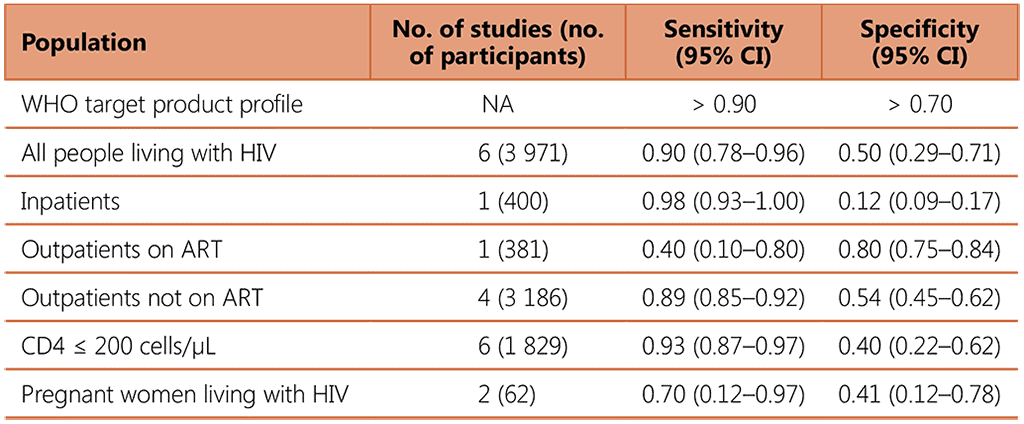كتاب روابط اجتياز لـ 1266
CRP is an indicator of general inflammation that can be measured using point-of-care tests performed on capillary blood collected via finger prick. The evidence reviewed for the performance of CRP included 6 studies from Kenya, South Africa and Uganda with a total of 3 971 participants (see Web Annex B, Table 13, and Web Annex C, Table 6). The average unweighted prevalence of TB among participants in the studies was 14%, ranging from 1% to 26%.
Data on the accuracy of CRP using a cut-off value of > 5 mg/L and of > 10 mg/L as indicators of TB disease were reviewed and both cut-offs were considered to have similar or superior accuracy when compared with the W4SS. The cut-off of > 5 mg/L was recommended because it is the lowest threshold indicating abnormality in many clinical settings, and it has higher sensitivity than the cutoff of > 10 mg/L. The choice of cut-off will depend on the availability of CRP technology in a given setting, the prevalence of TB and of other conditions that may increase CRP and the preference for increased sensitivity or increased specificity.
The IPD meta-analysis on CRP using a cut-off of > 5 mg/L reported similar sensitivity to and higher or similar specificity to the W4SS in all subpopulations assessed (see Table 6). When combined with the W4SS and used in parallel, whereby a positive screen for either tool led to a diagnostic test, it was found to have similar or higher sensitivity and specificity to the W4SS for all populations, depending on the cut-off threshold used and the subpopulation assessed. CRP was found to be most accurate among outpatients who were not on ART, compared with the W4SS alone, which had a sensitivity of 0.84 (95% CI: 0.75–0.90) and specificity of 0.37 (95% CI: 0.25–0.50) in this subpopulation. When performed before the W4SS among people living with HIV, CRP with a cut-off of > 5 mg/L as an initial screening test was found to be as sensitive (0.78; 95% CI: 0.70–0.85) as the W4SS but to have significantly higher specificity (0.73; 95% CI: 0.66–0.79)in this subpopulation. Similar to the W4SS, the specificity of CRP for TB screening among inpatients living with HIV was found to be extremely low, likely due to competing comorbidities that would also result in raised CRP levels and the presence of symptoms (see Web Annex C, Table 6).
Table 6. Diagnostic accuracy of C-reactive protein using a cut-off > 5 mg/L among different subpopulations of people living with HIV compared with culture as a reference standard

As a point-of-care biomedical test, CRP represents an opportunity for enhancing TB screening among people living with HIV. Health staff and patients might be more motivated to pursue a confirmatory diagnostic test following a positive screen for CRP. The specificity and predictive value of the test for detecting TB, however, will likely be reduced in settings with a lower TB prevalence than in those included in the meta-analysis.
ART: antiretroviral treatment; CI: confidence interval; NA: not applicable.

 تعليق
تعليق